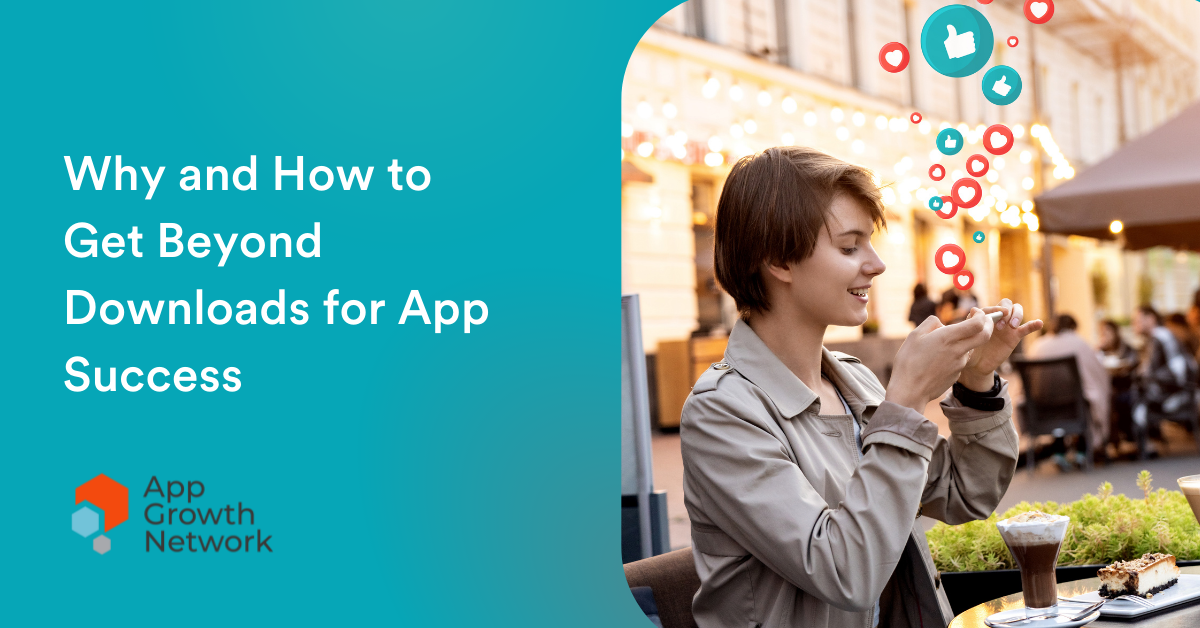Why and How to Get Beyond Downloads for True App Success

Reading Time: 6 minutes
“How do I get my app to reach 1 million downloads?”
As an app marketing agency, we receive similar requests all the time. For app publishers and mobile marketers—especially for newcomers to the mobile space—there’s a lot of focus placed on getting as many app downloads as possible.
This makes sense on the surface. How can you get users hooked—let alone make in-app purchases or sign up for a subscription—unless you get them to install your app in the first place?
But, let us tell you from experience, that the secret to an app’s success lies way beyond downloads!
Aside from having a killer product that people love, what’s the secret sauce to your app’s success? Lifecycle marketing.
Allow us to elaborate…
ASO for Lifecycle Marketing
Lifecycle marketing is about understanding every stage of the app user’s journey and creating effective strategies that deliver on the customer’s needs and expectations at that moment.
For most mobile apps, the customer journey (or funnel) looks something like this:

Read more about customer lifecycle marketing campaigns in our in-depth guide.
Master each stage of the app user journey
1. Acquisition
You hear a lot about user acquisition in mobile marketing. That’s because it’s very important! At this stage, your aim is to help users know who you are and also convince them to install your app on their mobile devices.
The most effective way to acquire users organically is through App Store Optimization (ASO) and word-of-mouth. ASO done right means getting more visibility within the App Stores—which (let’s face it), with over 2 million apps in the iOS App Store and over 2 million in Android Google Play—all apps need it!
Every element of your app store’s metadata affects ranking—app name and title, description, keywords, screenshots—plus the number of downloads and ratings/reviews.

Once your ASO strategy is rock solid, paid UA channels will help up your acquisition game. Apple Search Ads can be a game-changer for iOS apps, as ASA is known to be one of the most efficient ways to attract intent-based, quality users. Add Google Ads, Facebook Ads, Instagram, TikTok, etc. into the paid mix, and you may have yourself a winner!
2. Activation
To get this stage right, onboarding and UX are key. These factors will decide if a first-time app user will get hooked on your product or churn after Day 1.
Is it simple for the app user to figure out what your app does, how to use it, and the value it offers? Is the app’s design clean, intuitive, and does it offer a positive experience?
At this stage, you would also expect a user to complete an action (or in-app event) be it registering or signing up for a trial period. For example, for an app from the health and fitness category, like a meditation app, the desired in-app event may be completing a meditation session.
One way to encourage users to sign up is to offer a free trial—allowing the user full access to all of the app’s features at no cost for a week (or whatever period of time is reasonable) so they get hooked on the app product’s offerings.
Push notifications can play an important role at every app user lifecycle stage—including activation. Here’s an example of a push notification calendar for the onboarding stage that schedules specific notifications based on whether or not a user completes a registration within specified time frames.

Did you know that anywhere between 40%to 70% of push notifications actually go undelivered? Learn about the factors that influence push notification delivery in our recent Whitepaper.
3. Retention
All apps have financial business goals—but those can’t be met until you hit retention goals for Day 1, Day 7, Day 30, and so on. Depending on the type of app you have, these goals may vary—but typically, apps need their users to stick around and use the product consistently for the long haul.
In a nutshell: Get users to love your app—and they’ll not only come back for more, but they’ll also be telling their family and friends about it and become your greatest brand ambassadors!
Some retention best practices incorporate the proper implementation of push notifications, in-app messages, and gamification elements (think badges, rewards, leader boards, etc). The important part is getting the timing and messaging right. Messages and notifications that are personalized and, most importantly, not disruptive—are key.
To get a user hooked, you need a sticky app product! Incentives and rewards are some of the most common ways to do this.

Also, read how to use cohort analysis to boost retention on your app.
4. Retargeting
Keep in mind that re-engaging a user that has already used your product is much more cost-effective than acquiring a new user.
So, don’t underestimate the value in winning back churned users. For a game app, for example, using retargeting ads can help encourage users to return to the app by giving them extra coins for gameplay, or unlocking a new level or character. You want to entice churned users early on so that they continue exploring and interacting with the game more often.
Be sure to keep user churn rate and DAU data on your radar from the get-go. Having a strategy in place at Day 1, Day 7, and Day 14 will be to your advantage—most times, waiting until Day 30 is too late!
5. Monetization
Ideally, you’ve nailed down engagement and retention and app users LOVE your app. Once they’re hooked, they get to purchase events and eventually commit to a purchase. Your monetization strategy could include in-app purchases, monthly and/or yearly subscriptions, or one-time app purchases.

Challenges that can an app encounter at each stage and how can ASO help?
Just like any complex system that has many moving parts, a breakdown in even the smallest cog can make the whole structure collapse.
Or if you want to keep the funnel visual in mind, just think about where you can spring a leak—which is pretty much anywhere. The important part is identifying where these leaks are and fixing them!
For example, at the acquisition stage, your app may not be discoverable in app stores. Not including relevant keywords in your app store listing or poor app ratings could be the problem. Conducting an ASO audit and getting your ASO score is a huge help in figuring this out.
Or, at the conversion stage, an overly complicated onboarding process may be your leak. Are you asking too many questions or requesting too much personal information from the user from the beginning? If the user is bombarded with too much before getting a first crack at experiencing what the app does and what it’s like, you may end up with a frustrated (and churned) user.
In a nutshell
For every mobile app marketing strategy, getting downloads is important. But it’s usually the tip of the iceberg.
For long-term app success, it’s important to look at the full funnel of the app user lifecycle journey and identify where the leaks are—what is it that’s stopping your user from loving your product and keep them from coming back for more?
Mastering the funnel requires hands-on knowledge and mastery of ASO marketing and paid media (user acquisition), the optimal customer and UX experience (activation), push notifications and gamification strategies (engagement and retention), and how to win back churned users (re-engagement).
If this sounds complicated, you can depend on the services of professional app marketing agencies like our professional team at App Growth Network. We’re happy to help!













